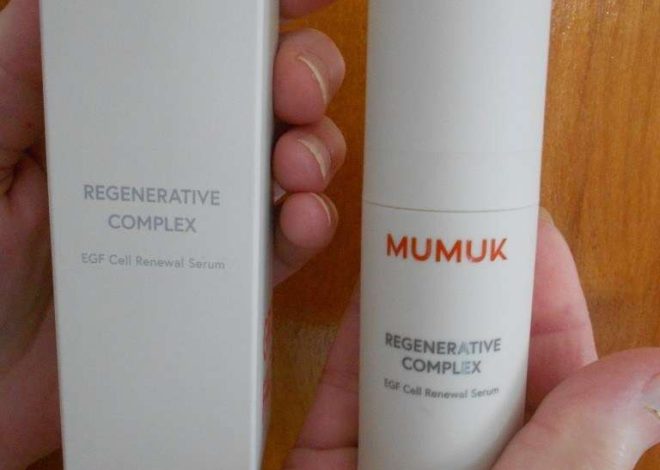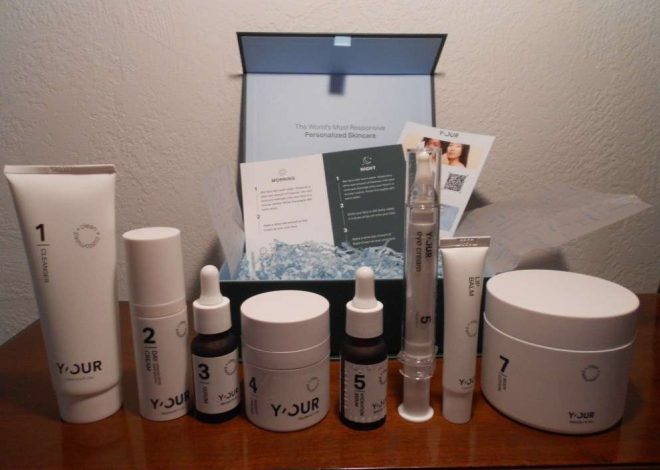
Chincredible Results Await: Your Guide to Double Chin Cosmetic Surgery
Table of Contents
Understanding the Causes and Determining Your Candidacy
Before diving into surgical solutions, it’s essential to understand the underlying factors that contribute to a double chin. The appearance of submental fullness is often a complex interplay of anatomy, genetics, and lifestyle.
The neck area is composed of several key anatomical structures that can influence its contour. These include the skin, the superficial fat deposits directly beneath the skin, and the platysma muscle, which is a thin sheet of muscle extending from the chest up into the face and jawline. Below the platysma, there can be deeper fat pads.
Skin elasticity plays a critical role in how the neck ages and responds to changes. Youthful skin has excellent elasticity, allowing it to conform smoothly to underlying structures. As we age, this elasticity diminishes, leading to sagging and looser skin that can exacerbate the appearance of a double chin, even in individuals with minimal fat.
The platysma muscle can also contribute to an undesirable neck contour. Over time, or due to genetic predisposition, this muscle can weaken, separate, or develop prominent bands that pull down on the jawline, creating a “turkey neck” appearance or accentuating fullness under the chin.
Fat deposits are perhaps the most commonly recognized cause of a double chin. While weight gain can certainly lead to increased fat accumulation in this area, many individuals maintain a healthy weight yet still struggle with submental fat due to genetics. If your parents or grandparents had a double chin, you might be predisposed to developing one, regardless of your body mass index.
The aging process naturally leads to a loss of skin elasticity, weakening of the platysma muscle, and a downward migration of facial tissues, all of which contribute to the formation or worsening of a double chin. Even weight changes, particularly significant weight loss after a period of gain, can leave behind loose skin that creates the appearance of submental fullness.
Who is a Good Candidate?
Determining if you are a good candidate for double chin surgery involves a comprehensive evaluation of your physical health, aesthetic goals, and the specific characteristics of your neck and jawline.
Firstly, good overall health is paramount. Candidates should not have any life-threatening illnesses or medical conditions that could impair healing. It is crucial to disclose your full medical history during your consultation. Being a non-smoker is also highly recommended, as smoking significantly increases surgical risks, impairs healing, and can compromise long-term results.
Realistic expectations are vital for patient satisfaction. While surgery can dramatically improve your profile, it’s not about achieving perfection but rather a significant improvement. A good candidate understands the potential outcomes, limitations, and the recovery process.
Maintaining a stable weight is important, especially for procedures that primarily address fat removal. Significant weight fluctuations after surgery can alter results. While liposuction removes fat cells permanently, remaining fat cells can still expand if weight is gained, and new fat can accumulate in other areas.
Good skin quality, particularly elasticity, is a key factor, especially for less invasive procedures like liposuction. If your skin has good recoil, it will tighten nicely over the newly contoured area. For individuals with significant skin laxity, a neck lift might be a more appropriate solution to achieve optimal results.
Age considerations also play a role. Younger patients, typically under 40, often have better skin elasticity and may only require fat removal (e.g., liposuction). Patients over 40, or those with more advanced signs of aging like significant skin laxity or prominent neck bands, might be better candidates for a neck lift or a combination of procedures to address both fat and loose skin.
The best candidates are those whose primary concern is excess fat, loose skin, or a combination of both, and who are ready to commit to the surgical process and recovery.
Exploring Your Surgical Options for a Defined Jawline
Once you understand the causes of your double chin and have determined your candidacy, the next step is to explore the various surgical options available. The goal of these procedures is to create a more defined neck contour and a sharper jawline, enhancing your overall facial harmony.
There isn’t a “one-size-fits-all” solution. A personalized approach is key, as the most effective procedure for you will depend on the specific nature of your double chin – whether it’s primarily excess fat, loose skin, muscle laxity, or a combination of these factors.
Choosing a board-certified plastic surgeon is crucial. Their extensive training, experience, and adherence to high safety standards ensure you receive the best possible care and achieve optimal results. They will thoroughly assess your anatomy, discuss your aesthetic goals, and recommend the most suitable procedure. For those considering a transformative procedure, understanding the options for Double chin plastic surgery with an experienced professional like Dr. Jose Soler-Baillo, M.D., can be a valuable first step in your research.
Let’s dig into the different surgical techniques:
Chin Liposuction (Submental Liposuction)
Chin liposuction, also known as submental liposuction, is an excellent option for individuals whose primary concern is excess fat under the chin, provided they have good skin elasticity. This procedure is highly effective at removing localized fat deposits that are resistant to diet and exercise.
It is considered a minimally invasive procedure. Small incisions, typically only a few millimeters in length, are made discreetly under the chin or behind the ears. Through these tiny openings, a thin, hollow tube called a cannula is inserted. The surgeon then moves the cannula back and forth to gently break up and suction out the unwanted fat cells.
Often, a tumescent fluid – a sterile solution containing saline, lidocaine (a local anesthetic), and epinephrine (to constrict blood vessels and minimize bleeding) – is infiltrated into the treatment area before fat removal. This fluid helps to numb the area, makes fat removal easier, and reduces bruising.
The procedure typically takes less than an hour and can often be performed under local anesthesia with sedation, meaning you’ll be comfortable but not fully unconscious. Chin liposuction boasts a relatively short recovery period compared to more extensive surgeries, making it a popular choice for many patients.
Submentoplasty
Submentoplasty is a procedure that offers a middle ground between simple chin liposuction and a full neck lift. It is ideal for patients who have both excess fat and mild to moderate muscle laxity in the neck, but not significant skin sagging. It’s often referred to as a “mini” neck lift because it addresses more than just fat.
This procedure typically combines liposuction to remove excess fat with techniques to tighten the platysma muscle. The surgeon makes a small incision under the chin, similar to liposuction. Through this incision, fat is removed, and then the edges of the platysma muscle are often brought together and sutured to create a tighter, more defined neck angle. This internal tightening helps to eliminate vertical bands and improve the contour of the neck.
By addressing both fat and muscle, submentoplasty can achieve a more comprehensive improvement in the neck and jawline profile than liposuction alone, without the more extensive incisions and recovery associated with a full neck lift.
Neck Lift (Lower Rhytidectomy)
A neck lift, or lower rhytidectomy, is the most comprehensive surgical option for addressing a double chin and other signs of aging in the neck and jawline. It is best suited for individuals with significant skin laxity, prominent jowls, or a “turkey neck” appearance caused by loose skin and banding of the platysma muscle.
This procedure involves making incisions that are typically hidden around the ears and sometimes under the chin. Through these incisions, the surgeon can remove excess skin, tighten the underlying muscles (platysmaplasty), and reposition the remaining tissues to create a smoother, firmer, and more youthful neck contour. Fat may also be removed during a neck lift, either through liposuction or direct excision.
Because it addresses more extensive concerns, a neck lift is a more involved procedure with a more extensive recovery period compared to liposuction or submentoplasty. However, it can yield the most dramatic and long-lasting results for appropriate candidates.
Here’s a comparison of these surgical options:
| Feature | Chin Liposuction | Submentoplasty | Neck Lift (Lower Rhytidectomy) |
| Candidacy | Excess fat, good skin elasticity, younger patients | Excess fat, mild muscle laxity, mild skin laxity | Significant skin laxity, prominent jowls/bands, older patients |
| Procedure | Small incisions, cannula to suction fat | Liposuction + muscle tightening via small incision | Incisions around ears/under chin, removes skin, tightens muscle |
| Recovery | Short (days to 1-2 weeks) | Moderate (1-2 weeks) | More extensive (2-4 weeks or more) |
| Primary Focus | Fat removal | Fat removal + muscle tightening | Skin tightening + muscle tightening + fat removal |
| Anesthesia | Local with sedation | Local with sedation or general | General |
The Double Chin Plastic Surgery Journey: Recovery, Risks, and Results
Undergoing double chin plastic surgery is a significant decision, and understanding the journey from post-operative care to final results is crucial. Your commitment to post-operative care and diligently following your surgeon’s instructions are paramount for optimal healing and achieving the best possible outcome.
What to Expect During Recovery
The recovery timeline for double chin surgery varies depending on the specific procedure performed, but generally, patients can expect a period of 1-2 weeks of initial recovery before feeling comfortable returning to most social activities.
Immediately after surgery, you will experience some swelling and bruising in the treated area. This is a normal part of the healing process. The swelling might be most noticeable in the first few days and will gradually subside over several weeks to months. Bruising typically resolves within 1-3 weeks.
Many surgeons will recommend or require the use of compression garments, such as a chin strap, for a specified period (e.g., 10-14 days continuously, then nightly for a few more weeks). These garments help to reduce swelling, promote skin retraction, and support the healing tissues.
Pain management is usually straightforward. Discomfort is typically mild to moderate and can be managed with prescribed oral pain medication. You might also experience some tightness, numbness, or tingling in the treated area, which are normal sensations as nerves heal.
Activity restrictions will be in place during your recovery. Strenuous activities, heavy lifting, and intense exercise should be avoided for several weeks to prevent complications and allow for proper healing. Your surgeon will provide specific guidelines on when you can gradually resume your normal routine.
Any incisions made will go through a process of scar maturation. Initially, scars may appear red or raised, but over time, they typically fade and flatten, becoming much less noticeable. Proper scar care, as advised by your surgeon, can further optimize their appearance.
Potential Risks and Complications
Like any surgical procedure, double chin surgery carries inherent risks and potential complications. While serious complications are rare, it’s important to be aware of them. Your surgeon will discuss these thoroughly during your consultation.
Common risks include:
- Infection: Though rare, it can occur and usually requires antibiotics.
- Asymmetry: Slight differences between the two sides of the neck/jawline.
- Bleeding and hematoma (a collection of blood under the skin): May require drainage.
- Anesthesia risks: Reactions to anesthesia are possible, though rare with modern techniques.
- Nerve injury: Temporary or, in very rare cases, permanent numbness or weakness in facial muscles.
- Scarring: While incisions are strategically placed to be inconspicuous, some scarring is inevitable.
- Unsatisfactory results: May occur if expectations are unrealistic or due to individual healing variations. In some cases, revision surgery may be considered.
The importance of a qualified surgeon cannot be overstated in mitigating these risks. A board-certified plastic surgeon has the expertise and experience to perform the procedure safely and effectively, and to manage any complications should they arise.
Expected Results from Double Chin Plastic Surgery
The results from double chin plastic surgery can be transformative, leading to a significantly improved neck contour and a more defined jawline. Patients often report looking younger and thinner, as the removal of submental fullness creates a sleeker profile and better facial harmony.
The youthful appearance achieved is one of the most rewarding aspects for patients. By addressing sagging skin and excess fat, the procedure can restore a more youthful angle between the chin and neck, which is a hallmark of an aesthetically pleasing profile.
The permanence of results largely depends on maintaining a stable weight. While fat cells removed during liposuction are gone permanently, remaining fat cells can still enlarge with weight gain, and the natural aging process will continue. However, the structural changes made during a neck lift or submentoplasty are generally long-lasting.
It’s important to be patient with the healing process to see the final results. While immediate improvements are often visible, residual swelling can obscure the ultimate outcome for several weeks or even months. Typically, the final, refined contours become apparent after several months as all swelling fully subsides and tissues settle into their new positions.
Frequently Asked Questions about Double Chin Procedures
We often receive many questions about double chin surgery, covering everything from cost to recovery. Here, we address some of the most common inquiries to help you further understand your options.
How much does double chin surgery typically cost?
The cost of double chin surgery can vary significantly, ranging from approximately $1,200 to $12,700. This wide range reflects the different types of procedures available and numerous factors that influence the final price.
Key factors affecting cost include:
- Surgeon’s fee: This is based on the surgeon’s experience, reputation, and geographic location. Highly experienced and sought-after surgeons may charge more.
- Anesthesia fees: The type of anesthesia used (local, sedation, or general) and the length of the procedure will impact this cost.
- Facility fees: These cover the use of the surgical facility or operating room.
- Geographic location: Costs can vary considerably based on the city or region where the surgery is performed. Major metropolitan areas often have higher prices.
- Procedure complexity: A simple chin liposuction will generally be less expensive than a comprehensive neck lift, which involves more extensive work.
- Pre-operative tests and post-operative garments/medications: These can add to the overall cost.
Cosmetic procedures are generally not covered by health insurance, as they are considered elective. During your consultation, your surgeon’s office will provide a detailed breakdown of all anticipated costs.
What should I ask my surgeon during a consultation?
A thorough consultation is your opportunity to gather all the information you need to make an informed decision. We recommend preparing a list of questions in advance. Here are some key questions to ask your surgeon:
- Am I a good candidate for double chin surgery? Based on my specific anatomy and goals, what are my options?
- Which procedure do you recommend for me, and why? (e.g., liposuction, submentoplasty, neck lift, or a combination).
- What are the potential risks and complications associated with the recommended procedure? How are they managed?
- Can I see before-and-after photos of your previous patients who have undergone similar procedures? This helps visualize potential outcomes.
- What is the recovery process like for the recommended procedure? What is the typical downtime, and what activities should I avoid?
- What will my total cost be for the procedure, including all fees (surgeon, anesthesia, facility, etc.)? Are there any financing options available?
- What kind of anesthesia will be used?
- How long will the procedure take?
- What kind of results can I realistically expect, and how long will they last?
- What is your experience with this specific procedure?
Asking these questions will help ensure you have a clear understanding of the process, potential outcomes, and financial commitment involved.
How do surgical options compare to non-surgical treatments?
When considering double chin reduction, it’s important to weigh surgical options against non-surgical alternatives. Each approach has distinct characteristics regarding effectiveness, invasiveness, and recovery.
Surgical treatments (liposuction, submentoplasty, neck lift) generally offer:
- More dramatic and immediate results: Significant fat removal and/or skin tightening can be achieved in a single session.
- Ability to address both fat and skin laxity: Surgical procedures can physically remove excess fat and tighten loose skin and muscles, providing a comprehensive solution.
- Often a single treatment: While recovery is longer, the desired outcome is typically achieved after one surgical procedure.
- Longer downtime: Recovery involves swelling, bruising, and activity restrictions for several days to weeks.
- Permanent fat removal: Liposuction permanently removes fat cells from the treated area.
Non-surgical treatments (such as Kybella, CoolSculpting, or radiofrequency treatments) typically offer:
- Less invasive procedures: Injections or external devices are used, avoiding incisions.
- Primarily for fat reduction only: Most non-surgical options are effective at dissolving or freezing fat cells but do not address loose skin or muscle laxity.
- Multiple sessions needed: Achieving noticeable results often requires a series of treatments, usually spaced weeks apart (e.g., Kybella typically requires 2-6 sessions).
- Less downtime: Patients can often return to normal activities immediately or within a day or two, though some swelling and bruising can occur.
- More subtle results: While effective for mild to moderate submental fullness, the results are generally less dramatic than surgical interventions.
- Not suitable for everyone: Patients with significant skin laxity or large amounts of fat may not be good candidates for non-surgical options.
The choice between surgical and non-surgical approaches depends on the extent of your double chin, your skin quality, your desired outcome, and your tolerance for downtime. For individuals seeking a significant and lasting change that addresses both fat and skin, surgical options often provide the most comprehensive solution.
Conclusion
A double chin can be a source of self-consciousness, but with advancements in cosmetic surgery, achieving a more defined and confident profile is more accessible than ever. We’ve explored the various causes of submental fullness, from genetics to aging, and detailed the range of surgical solutions available.
Whether your concern is primarily excess fat, mild muscle laxity, or significant skin sagging, there’s a custom approach that can help. From the minimally invasive chin liposuction to the comprehensive neck lift, each procedure offers unique benefits designed to sculpt and refine your jawline.
The journey to a more confident profile begins with understanding your unique needs and the options available. The final and most crucial step is a thorough consultation with a board-certified plastic surgeon. They will provide a personalized assessment, explain the most suitable procedure for you, discuss realistic expectations, and guide you through every step of the process.
By choosing an experienced and qualified professional, you can start on this transformative journey with confidence, knowing you are in capable hands, and look forward to revealing a sleeker, more defined neck and jawline.



